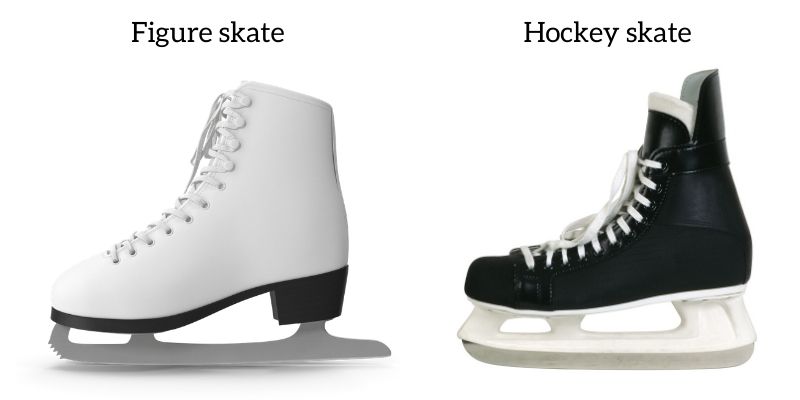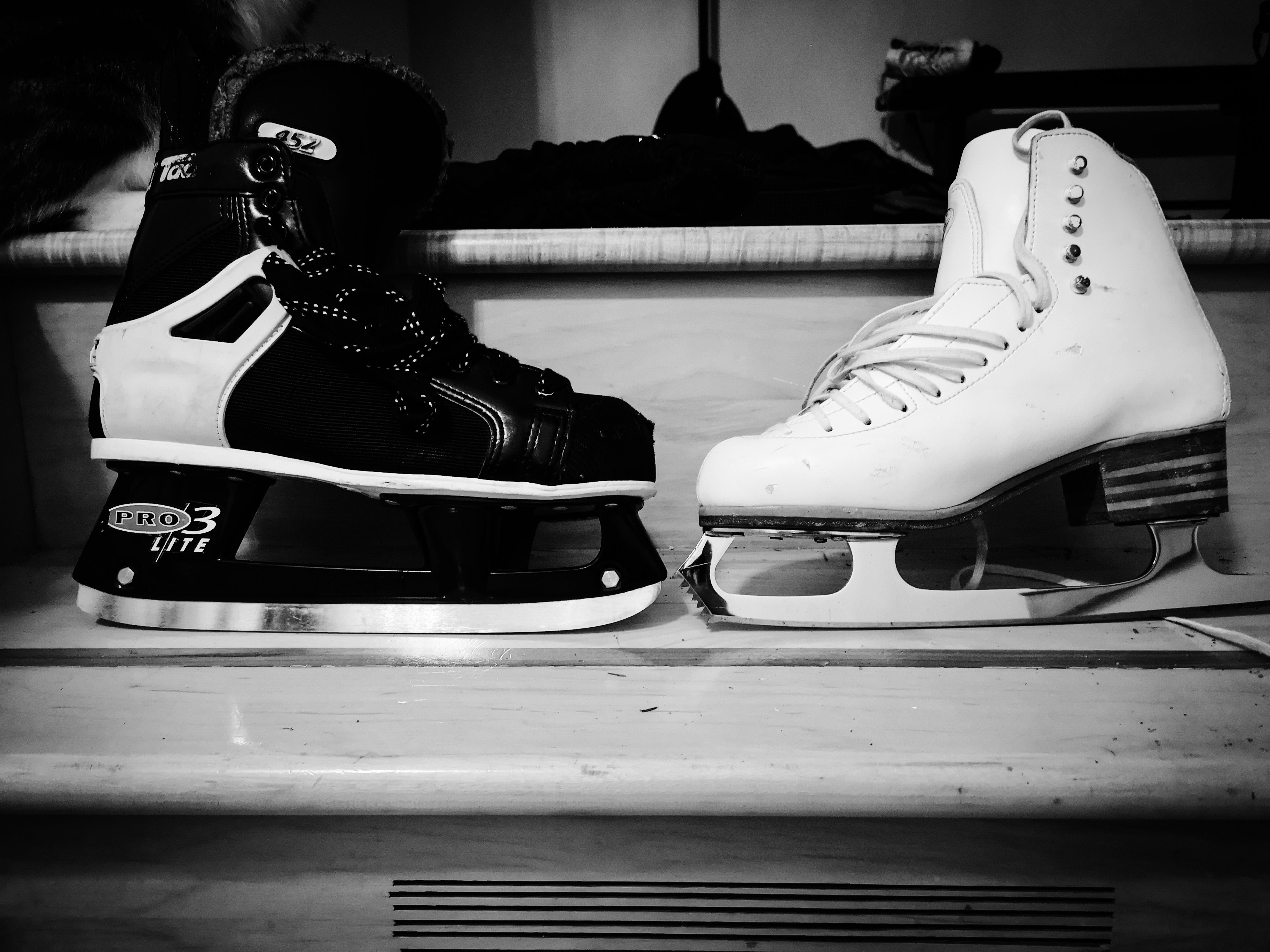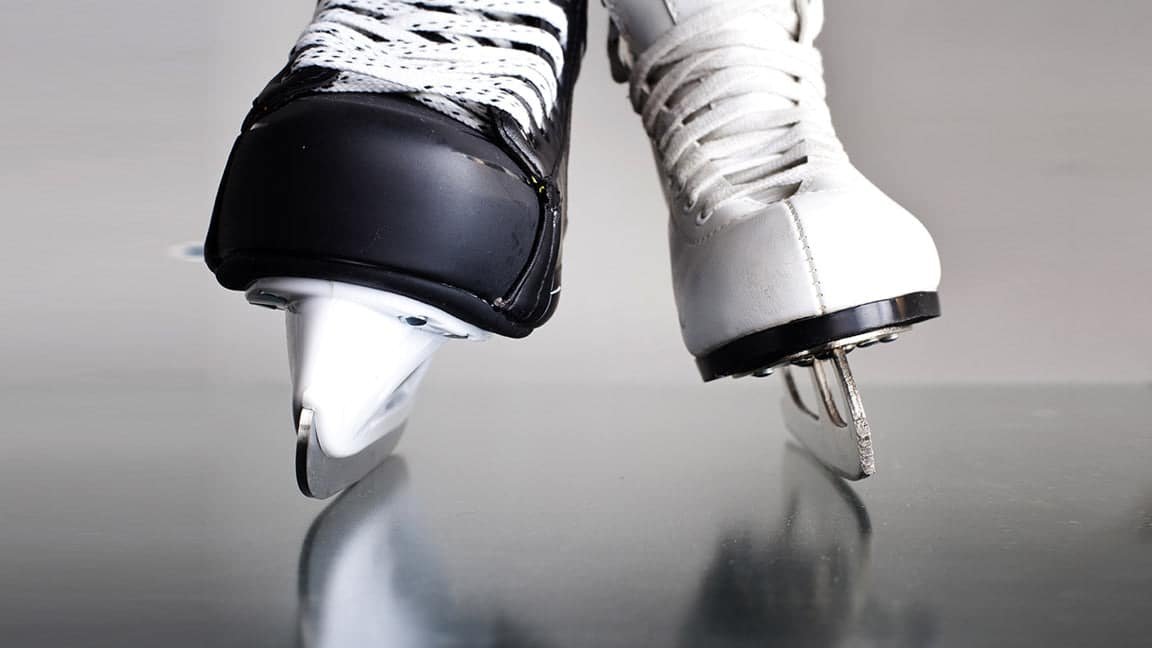Are hockey skates or figure skates easier to use? The answer depends on what you want.
Hockey skates offer speed and agility. Figure skates provide balance and grace. Choosing between hockey and figure skates can be tricky. Each has unique features and benefits. Hockey skates are designed for quick movements and speed on the ice. They have a curved blade that allows for sharp turns.
On the other hand, figure skates have a longer, flatter blade. This design helps with balance and performing jumps and spins. Both types of skates require practice to master. Knowing the differences can help you decide which is easier for you. Let’s dive deeper into what makes each type of skate unique and how they can fit your needs.

Credit: www.youtube.com
Introduction To Skates
Skating is a popular and exciting sport enjoyed by many. Whether gliding on ice for fun or competing, choosing the right skates is essential. Hockey skates and figure skates are the two main types. Each has unique features and benefits. But which one is easier to use?
Brief History
Skating dates back to ancient Scandinavia. People used bones as skates. Over time, skating evolved. In the 19th century, modern ice skating emerged. Figure skating gained popularity first. It became an Olympic sport in 1908. Hockey followed, joining the Olympics in 1920.
Types Of Skates
Hockey skates and figure skates differ in design. Hockey skates are built for speed and agility. They have a shorter blade and a hard boot. This allows quick turns and fast stops.
Figure skates have a longer blade. They feature toe picks for jumps and spins. The boot is softer, providing better ankle movement. Figure skates are designed for grace and precision.
Both types of skates serve different purposes. Understanding their differences helps in choosing the right one.
Design Differences
When comparing hockey skates and figure skates, their design differences play a key role. The distinct features of each type influence how easy they are to use. Let’s dive into the design differences and understand the unique characteristics of both.
Blade Shape
One of the main design differences lies in the blade shape. Hockey skates have shorter, curved blades. This design allows for quick turns and fast stops. The blades are also thick and sturdy, enhancing stability during aggressive moves.
In contrast, figure skates have longer, straight blades. These blades are thinner and have a toe pick at the front. The toe pick helps with jumps and spins. The straight blade aids in smooth gliding and precise movements on the ice.
| Feature | Hockey Skates | Figure Skates |
|---|---|---|
| Blade Length | Shorter | Longer |
| Blade Shape | Curved | Straight |
| Blade Thickness | Thicker | Thinner |
| Toe Pick | Absent | Present |
Boot Structure
The boot structure is another major design difference. Hockey skates have a rigid, high-top boot. This design offers maximum ankle support and protection. The stiff structure helps in quick maneuvers and impacts.
Figure skates have a softer, more flexible boot. This structure allows for a greater range of motion. The flexibility is crucial for performing intricate footwork and graceful movements.
| Feature | Hockey Skates | Figure Skates |
|---|---|---|
| Boot Rigidity | Rigid | Softer |
| Boot Height | High-top | Mid-top |
| Ankle Support | Maximum | Moderate |
| Flexibility | Low | High |
Performance Aspects
Choosing between hockey skates and figure skates can be tough. Each type has unique performance aspects that affect how you skate. This section will delve into the key performance aspects, focusing on maneuverability and speed.
Maneuverability
Maneuverability is crucial for both hockey and figure skating. But the skates differ in design, impacting how they handle turns and spins.
- Hockey skates are designed for quick, sharp movements. They have a shorter, curved blade, making them agile on the ice.
- Figure skates feature a longer blade with a toe pick. This design allows for smoother, more controlled movements and intricate footwork.
In a nutshell, hockey skates excel in quick turns. Figure skates shine in controlled, graceful movements.
Speed
Speed is another key performance aspect. The design of the skates affects how fast you can go.
| Skate Type | Speed Capability |
|---|---|
| Hockey Skates | Built for speed and quick acceleration. The curved blade reduces friction, allowing fast sprints and swift changes in direction. |
| Figure Skates | Designed for precision and control. The longer blade and toe pick do not prioritize speed but enable intricate movements and jumps. |
Hockey skates are better for those who need speed. Figure skates focus on controlled, artistic movements.

Credit: www.fhfsc.ca
Learning Curve
Choosing between hockey skates and figure skates can be daunting for beginners. Both types of skates have distinct learning curves. Understanding these differences can help you decide which pair to lace up first.
Beginner Challenges
Starting out with hockey skates presents unique challenges. The boot is stiffer, providing ankle support. Yet, it can feel restrictive. Beginners might struggle with the lack of toe picks, making it hard to push off. Balancing can also be tricky due to the shorter, curved blade.
Figure skates, on the other hand, come with their own set of difficulties. The boot is more flexible, offering less ankle support. The toe pick, while useful for jumps, can trip up beginners. Balancing is easier due to the longer, straight blade, but the skate’s overall design requires precision.
Skill Development
With hockey skates, skill development focuses on speed and agility. Beginners need to practice quick direction changes and stops. The stiffer boot helps build strength and stability over time. As skills improve, the curved blade allows for sharper turns and faster strides.
Figure skates emphasize grace and control. Beginners start with basic moves like gliding and simple spins. The toe pick becomes a valuable tool for jumps and intricate footwork. The flexible boot enhances the skater’s ability to perform elegant movements. As proficiency grows, skaters learn complex routines and advanced spins.
Both types of skates require dedication and practice. Whether you aim for the speed of hockey or the elegance of figure skating, each path has its own rewards.
Choosing The Right Skates
Choosing the right skates is crucial for both beginners and seasoned skaters. The type of skate you select will impact your performance and comfort. Whether you are leaning towards hockey skates or figure skates, consider various factors to make an informed decision.
Personal Preferences
Your personal preferences play a significant role in selecting skates. Do you enjoy speed and agility, or do you prefer graceful movements? Hockey skates are designed for quick turns and fast-paced action. Figure skates, on the other hand, focus on elegance and precision.
Think about the type of skating you find most enjoyable. Your comfort and style will guide you towards the right choice. Trying on different skates can also help you determine which feels better on your feet.
Purpose And Goals
Consider your skating purpose and goals. Are you aiming to play hockey or perform figure skating routines? Hockey skates offer more ankle support for quick maneuvers. Figure skates have a toe pick for jumps and spins.
Knowing what you want to achieve will help you choose the right skates. If you are unsure, talk to a coach or a knowledgeable friend. They can provide valuable insights based on your interests and goals.
Evaluate your aspirations and select skates that align with your objectives. This will ensure you enjoy your skating experience to the fullest.

Credit: connectingwithscience.org
Frequently Asked Questions
What Are The Main Differences Between Hockey Skates And Figure Skates?
Hockey skates have a shorter, curved blade for quick movements. Figure skates have a longer blade with toe picks for jumps and spins.
Which Type Of Skates Is Better For Beginners?
Figure skates are often easier for beginners. The longer blade and toe picks provide more stability and control.
Are Hockey Skates Faster Than Figure Skates?
Yes, hockey skates are designed for speed. Their shorter, curved blades allow for quick turns and fast skating.
Can I Use Figure Skates For Playing Hockey?
No, figure skates are not suitable for hockey. They lack the speed and agility needed for the game.
Do Figure Skates Offer More Ankle Support?
Yes, figure skates typically offer better ankle support. This helps with balance and performing jumps and spins.
Are Hockey Skates More Comfortable Than Figure Skates?
Comfort varies by personal preference. Some find hockey skates more comfortable due to their snug fit. Others prefer the padding in figure skates.
Which Skates Are Better For Kids?
Figure skates are often better for kids. They provide more stability, making it easier to learn basic skating skills.
Do I Need Different Skills For Hockey And Figure Skating?
Yes, different skills are needed. Hockey focuses on speed and agility. Figure skating focuses on precision and grace.
Can You Switch Between Hockey And Figure Skates Easily?
Switching can be challenging. Each type of skate requires different techniques and muscle memory. Practice is needed to adapt.
Conclusion
Choosing between hockey skates and figure skates depends on your goals. Hockey skates offer speed and agility, ideal for fast-paced games. Figure skates provide better control for graceful movements and jumps. Consider your interests and the type of skating you want to pursue.
Both types have their own challenges and benefits. Try both to see which feels more comfortable. Your choice should align with your skating style and preferences. Remember, practice and patience are key to mastering either type. Enjoy the journey and have fun on the ice!




